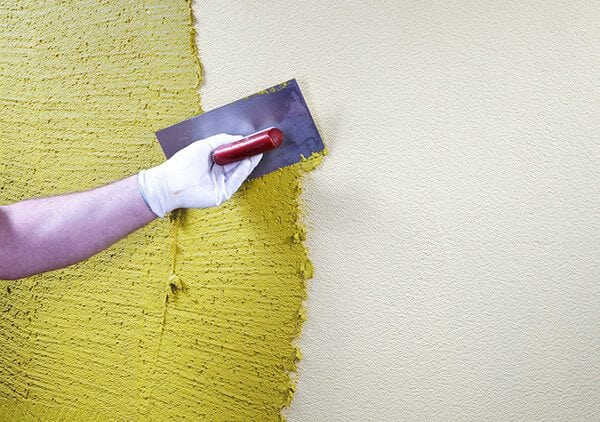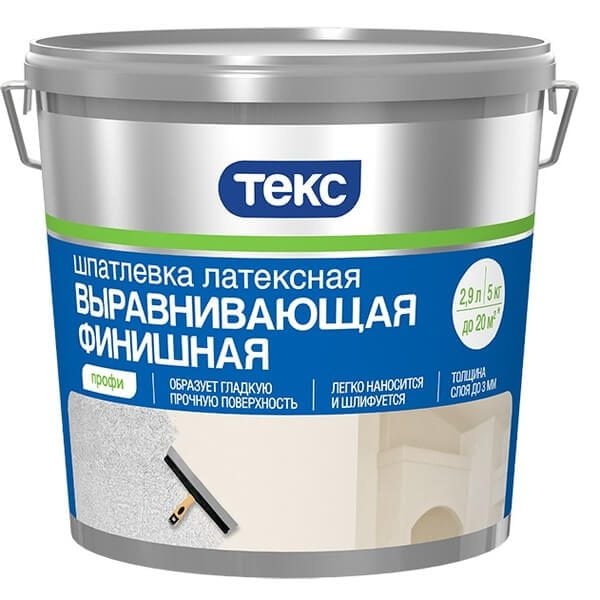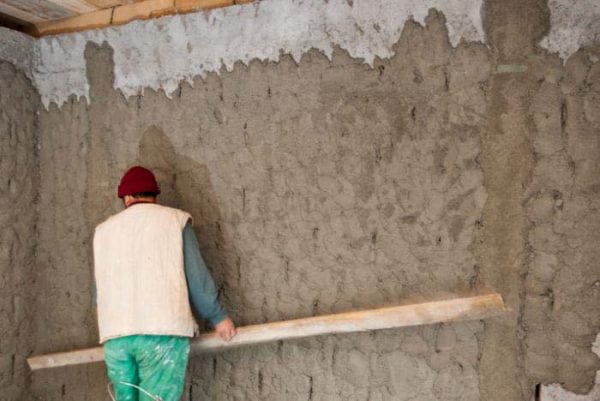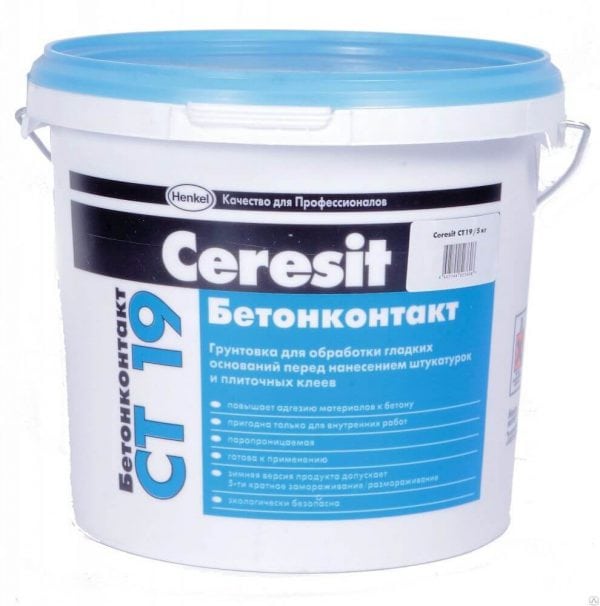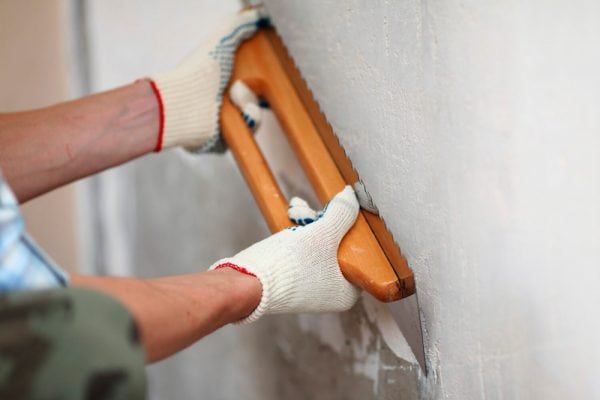Decorative plastering of surfaces is a very responsible way of wall decoration. Not only the appearance of the wall, but also the consumption per 1 m² of surface and the durability of the composition applied to it will depend on the quality of the application of such plaster. To ensure the required quality of adhesion of the working solution to the coating base, before starting work, it is necessary to use various types of primers for decorative plaster, as well as the right technologies for their practical application.
- Long Life Conditions
- Pre-alignment is an important point
- Features of the choice of primer
- Putty Requirements
- Priming technology
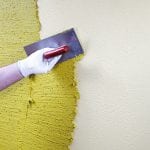
Long Life Conditions
For high-quality coating of walls with decorative plaster, you need:
- Carefully level the surfaces in both vertical and horizontal directions.
- Use finishing putty to cover all irregularities.
- Ensure good adhesion of the decorative plaster to the base.
- To ensure the strength of the initial surface, on which further work will be carried out.
To solve these problems, you need to know what material the walls are made of and what is its technical condition at the time of the primer. For example, for continuous porous coatings (concrete, brick, wood) of internal surfaces, deep penetration primers must be used. They provide the vapor permeability of the treated areas and good adhesion of the plaster to the base.
In addition, deep penetration primers often contain antiseptic components that prevent the formation of fungi and mold, which are practically impossible to remove from internal walls decorated with decorative plaster.
In the case of loose surfaces, primers with a strengthening effect are used. They help to increase the density of walls and, like primers of deep penetration, improve adhesive performance. Such primers are recommended for use on lime plaster, since after several years of operation it begins to destroy the original surface of the wall.
to contents ↑Pre-alignment is an important point
Alignment of the surface before work is carried out by several methods, but the suspension method is considered the most practical and giving stable results. The wall part to be decorative plastering is marked diagonally with dowels, after which a measuring cord is pulled between them, using a plumb line. By the sag of the cord they judge where and how to align the wall.
The size of the gap before plastering can be partially eliminated by puttying, after which the surface is primed. Surplus can be brought down with a chisel or scraper. The primer consumption per 1 m² will increase, but the need for more expensive decorative plaster will decrease.
It happens that the gap is too large and exceeds 40-50 mm.In such cases, leveling and subsequent priming of the wall will not give the desired result. There are two options - before processing:
- upholstery the surface with shingles;
- equip a metal frame.
The latter, although it increases the bearing capacity of decorative plaster, is used much less frequently in practice. The reason is considered to be increased costs, as well as the need to use steels with an anti-corrosion coating or an aluminum strip.
to contents ↑Features of the choice of primer
Primers for decorative plaster are classified:
- pH value: acidic, alkaline and neutral;
- by the degree of increase in adhesion indicators of the primed surface;
- by viscosity of the composition;
- if possible work with certain types of decorative plaster.
The first indicator is important for the ability of the primer to hide or, conversely, highlight the characteristic surface defects on the wall. These include rust stains and salt deposits, which are especially common after lime treatment of exterior walls.
With a significant number of such surface defects, it is necessary to use only primers with an alkaline composition, the pH of which is the highest (from 8 units or more), moreover, deep penetration compositions. In this case, when the primer is neutralized salts, as a result of which even deep spots disappear.
The same applies to surface rust. It most negatively affects adhesion, since it destroys not only the surface of the wall, but also the primer itself, if it is chosen incorrectly.
to contents ↑Primers with reduced pH values are suitable for the treatment of internal surfaces of walls in rooms with normal or even slightly reduced relative humidity. For such rooms, the specific consumption of the primer per 1 m² is reduced.
Putty Requirements
After plastering, any internal and external surfaces are putty. The composition of the putty is also selected according to the degree of affinity with the plaster material.
An important parameter that determines the durability of decorative plaster is the compliance with it of the selected primer. Otherwise, after priming, partial or complete peeling of the plaster composition may occur. In order not to run into such a nuisance, it is necessary to exclude the use of putty, which includes highly viscous substances that have little absorbency (for example, oil putties, putties based on alabaster, adhesives).
to contents ↑Priming technology
Features of the primer walls for applying decorative plaster are as follows:
- An exceptionally deep, two-layer primer is used, and the thickness of each layer should be at least 10 mm. A thinner layer will not ensure the retention of heavy material on the wall. At the same time, the composition consumption per 1 m² will increase.
- A wide paint brush or roller should be used as a working tool: the use of thin brushes will not provide the primer with the required uniformity and thickness. You should not use a vacuum cleaner, spray gun or spray gun for the purpose of speeding up the work: the primer consumption per m² will increase, but the quality of the coating will deteriorate. This is due to the fact that for a deep penetration primer, it will not be possible for the components to penetrate deep into the treated surface. As a result, decorative plaster after application will begin to exfoliate from the treated surface.
- After the primer, immediately grout the treated surface. Such an operation is performed for both internal and external walls. As a result, the layer is compacted, providing a good basis for decorative plaster.
- So that the primed surface does not dry out, it must be moistened all the time before plastering. An ordinary flower trimmer or spray gun is suitable. The reason is that decorative plaster is easier and better to lay down on a slightly damp surface. This is especially important for interior surfaces in residential areas.
The primer for work before applying decorative plaster provides the finish surface with the required durability. Its consumption per 1 m² is about 200 ml and depends on the wall material and the state of the initial coating.

